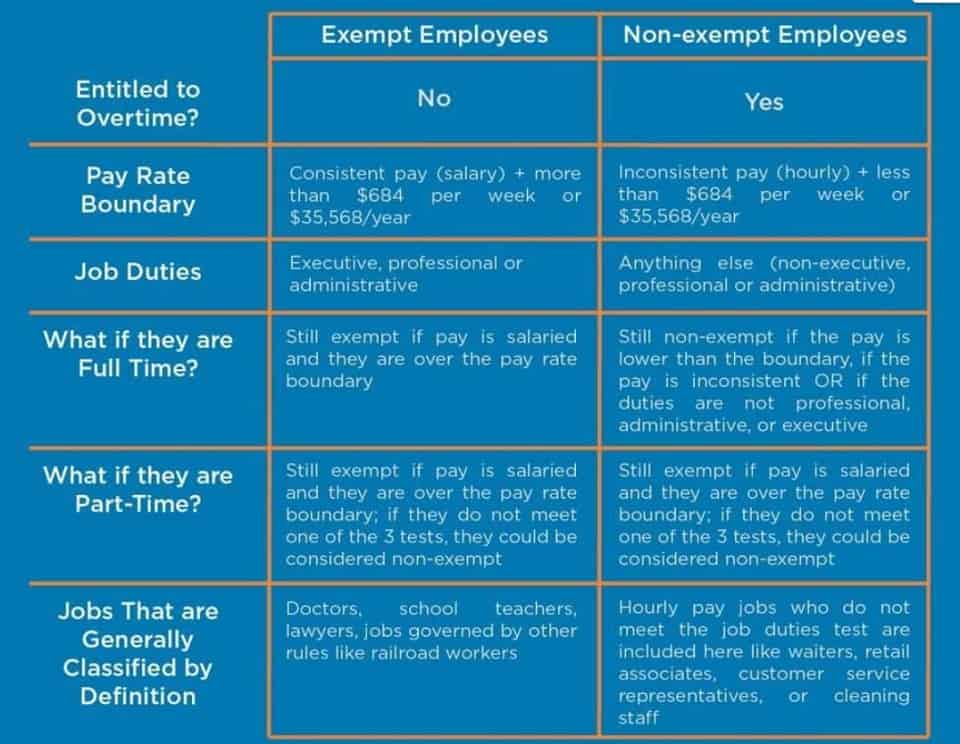Content


For example, if the financial leverage is 4, for every Rs.1 of equity, the company supports Rs.4 worth of assets. Higher the financial leverage, along with increased amounts of debt, will indicate the company is highly leveraged, and hence the investor should exercise caution. While the EBITDA margin is calculated at the operating level, the Profit After Tax margin is calculated at the final profitability level. At the operating level, we consider only the operating expenses; however, other expenses such as depreciation and finance costs are not considered. When we calculate the PAT margin, all expenses are deducted from the company’s Total Revenues to identify the company’s overall profitability. The Valuation ratios compare the company’s stock price with either the profitability of the company or the company’s overall value to get a sense of how cheap, or expensive the stock is trading. Thus, this ratio helps us analyse whether the company’s current share price is perceived as high or low.
Why are financial ratios important?
Financial ratios offer entrepreneurs a way to evaluate their company's performance and compare it other similar businesses in their industry. Ratios measure the relationship between two or more components of financial statements. They are used most effectively when results over several periods are compared.
As you can see, the DuPont model breaks up the RoE formula into three distinct components, with each component giving an insight into the company’s operating and financial capabilities. DuPont Model breaks up the RoE formula into three components, representing a certain aspect of the business.
Basic Financial Ratios and What They Reveal
The main provider of data for Cost of Capital is the Standard & Poors Compustat Data. Net Working Capital Ratio – A firm’s current assets less its current liabilities divided by its total assets. It shows the amount of additional funds available for financing operations in relationship to the size of the business. Quick Ratio – A firm’s cash or near cash current assets divided by its total current liabilities. It shows the ability of a firm to quickly meet its current liabilities.
- While comparing your ROA to other companies in your industry is helpful, it’s more helpful to look at how your return on assets changes over time.
- Gauging ratios can make all the difference in your results, giving you the detailed data you need to spot problem areas before you invest.
- The debt-to-assets ratio measures the debt of the company that is contributed to its assets.
- Higher ratio indicates that the company’s product is in high demand and sells quickly, resulting in lower inventory management costs and more earnings.
- For example, using the previous examples with current assets valued at $2 million and current liabilities at $1 million, say inventories are valued at $1 million.
- Two commonly used ratios are the dividend yield and payout ratio.
- However, like all other ratios, the metric has to be analyzed in terms of industry norms and company-specific requirements.
Inventory Turnover RatioInventory Turnover Ratio measures how fast the company replaces a current batch of inventories and transforms them into sales. Higher ratio indicates that the company’s product is in high demand and sells quickly, resulting in lower inventory management costs and more earnings. Return on equity is a measure of financial performance calculated by dividing net income by shareholders’ equity. Market ratios measure investor response to owning a company’s stock and also the cost of issuing stock. These are concerned with the return on investment for shareholders, and with the relationship between return and the value of an investment in company’s shares. There is no cut and dry rule for what makes a good financial ratio. There are many types of financial ratios, and each ratio must be interpreted based on the historic ratios of the company, as well as how it compares to its competitors.
Introduction to Financial Ratios
This information is supplied from sources we believe to be reliable but we cannot guarantee its accuracy. Hypothetical illustrations may provide historical or current performance information. Collection period 365/Accounts Receivable Turnover—measures the average number of days the company’s receivables are outstanding, between the date of credit sale and collection of cash. Accounts receivable turnover Net Sales/Average Accounts Receivable—gives a measure of how quickly credit sales are turned into cash. Alternatively, the reciprocal of this ratio indicates the portion of a year’s credit sales that are outstanding at a particular point in time.
For example, if a company has cash of $5 million and current liabilities of $4 million, the cash ratio is 1.25. This means that the company has enough cash and cash equivalents to pay off its current liabilities 1.25 times. For example, if net income is $500,000 and shareholder equity is $1 million, then the return on equity is 0.5. This means that every dollar invested in the company produces a return of $0.50, or a 50% return. This is another important measure for investors to determine if the company is worth their investment.
1 – A note on Financial Ratios
For this type of ratio analysis, one can use the formula given below for the same. If the ratio is less than 1, one can use it to purchase fixed assets. This ratio is used to know whether the company is having good fun or not to meet the long-term business requirement. Tells us whether the operating income is sufficient to pay off all obligations related to debt in a year.


A regular review of your company’s financial ratios can help you focus on areas that may need improvement. Liquidity, efficiency, and profitability ratios, compared with other businesses in your industry, can highlight any strengths and weaknesses you might have over your competition. It is also important to compare your ratios over time in order to identify trends. Ratios are calculated by dividing one number by another, total sales divided by number of employees, for example. Ratios enable business owners to examine the relationships between items and measure that relationship. Ratios are aids to judgment and cannot take the place of experience.
Company
However, you can compare the company’s P/E to similar stock prices for comparison. This shows you how easily a business’s short-term debts will be covered by its existing liquid assets, or cash. If the quick ratio is greater than one, the business is in a good financial position. While the gearing ratio measures the relative level of debt and long term finance, the interest cover ratio measures the cost of long term debt relative to earnings. In this way the interest cover ratio attempts to measure whether or not the company can afford the level of gearing it has committed to.
To to be meaningful, most ratios must be compared to historical values of the same firm, the firm’s forecasts, or ratios of similar firms. Finally, look at financial performance within the context of the political, business and economic environment in which the business operates. Profitability Ratios – these include the Return on Total Assets, Return on Capital Employed, Net Profit Margin and Net Asset Turnover and are used to assess how profitable the company is. Shareholder FundsShareholder Fund is the fund available to stakeholders after all liabilities have been met in the event of a company’s liquidation.
The comparisons may direct attention to areas within a company that need improvement or where competitors are more successful. Erica Gellerman is a CPA, MBA, content marketing writer, and founder of The Worth Project. Her work has been featured on Forbes, Money, Business Insider, The Everygirl, and more.
Earnings Per Share
Highlighting significant changes enables you to focus on key events or major factors that may have important implications for the company. This is because ROTA is typically used to measure general management performance, and interest and taxes are controlled externally. It is used to measure business profitability and its ability to repay the loan. A DSCR of less than 1.0 implies that the operating cash flows are insufficient for debt servicing, indicating negative cash flows. Is derived by dividing the company’s profit by the total number of shares outstanding. This financial ratio indicates whether or not working capital has been effectively utilized in making sales. Thereceivable turnover ratioshows how often the receivable was turned into cash.
The DuPont analysis uses both the P&L statement and the Balance sheet for the computation. Clearly, higher the debt Vishal seeks to finance his asset, higher is the RoE. The problem is with a high amount of debt, running the business gets very risky as the finance cost increases drastically. For this reason, inspecting the RoE closely becomes extremely important. One way to do this is by implementing a technique called the ‘DuPont Model’ also called DuPont Identity.
The net profit margin, sometimes known as the trading profit margin measures trading profit relative to sales revenue. Thus a trading profit margin of 10% means that every 1.00 of sales revenue generates .10 in profit before interest and taxes. Some industries tend to have relatively low margins, which are compensated for by high volumes. Higher than average net profit margins for the industry may be an indicator or good management.
https://www.bookstime.com/ help interpret the results and compare with previous years and other companies in the same industry. Investors and banks use financial ratios to judge the strength of a business. They’re also used by financial auditors who want insight into a company’s financial statements. Looking at all of the numbers on your financial statements can be a little overwhelming. There’s a lot of information and sometimes it’s difficult to focus on what the best measures are for your business health. That’s where knowing the best financial ratios for a small business to track comes in.
A larger number of days represent cash that is unavailable for use in operations. Non-operating income includes items not related to operations, such as investment income, contributions, gains from the sale of assets and other unrelated business activities. They provide a minuscule amount of information compared to the information included in the five main financial statements and the publicly traded corporation’s annual report to the U.S. You can earn our Financial Ratios Certificate of Achievement when you join PRO Plus.


They can also be used for comparison to the same ratios in other industries, for other similar firms, or for the business sector. Financial ratio analysis uses the data gathered from the calculation of the ratios to make decisions about improving a firm’s profitability, solvency, and liquidity. The cash ratio is an indication of the firm’s ability to pay off its current liabilities if for some reason immediate payment were demanded. Short-term creditors prefer a high current ratio since it reduces their risk. Shareholders may prefer a lower current ratio so that more of the firm’s assets are working to grow the business.
Ratios are time-sensitive by nature, because they measure data that changes over time. You can gain an edge when you compare ratios from one time period to another to get an idea of a company’s growth or other changes over time.
The offers that appear in this table are from partnerships from which Investopedia receives compensation. Investopedia does not include all offers available in the marketplace. Fundamental analysis contrasts with technical analysis, Financial Ratios which focuses on determining price action and uses different tools, such as chart patterns and price trends, to do so. When ratios are properly understood and applied, they can help improve your investing results.
Each report provides an overall current picture of an industry, including overviews, leading companies, sales information, and authoritative sources for researching hundreds of industries. Includes Business Environmental Profiles that summarize key drivers for industries in the U.S. Return on assets indicates how well your company is performing by comparing your profits to the capital you’ve invested in assets. The higher the ROA, the more efficiently you use your economic resources. However, companies with consistent cash flows might be able to sustain a higher ratio without running into problems. I guess VST will use this for investment or as deposits which will fetch them Interest.
Knowing that a share price is $2.13 doesn’t tell you much, but knowing that the company’s price-to-earnings ratio (P/E) is 8.5 provides you with more context. It tells you that when divided by its earnings per share (EPS or $0.25 in this case), its price ($2.13) equals 8.5. Bench gives you a dedicated bookkeeper supported by a team of knowledgeable small business experts. We’re here to take the guesswork out of running your own business—for good. Your bookkeeping team imports bank statements, categorizes transactions, and prepares financial statements every month.
